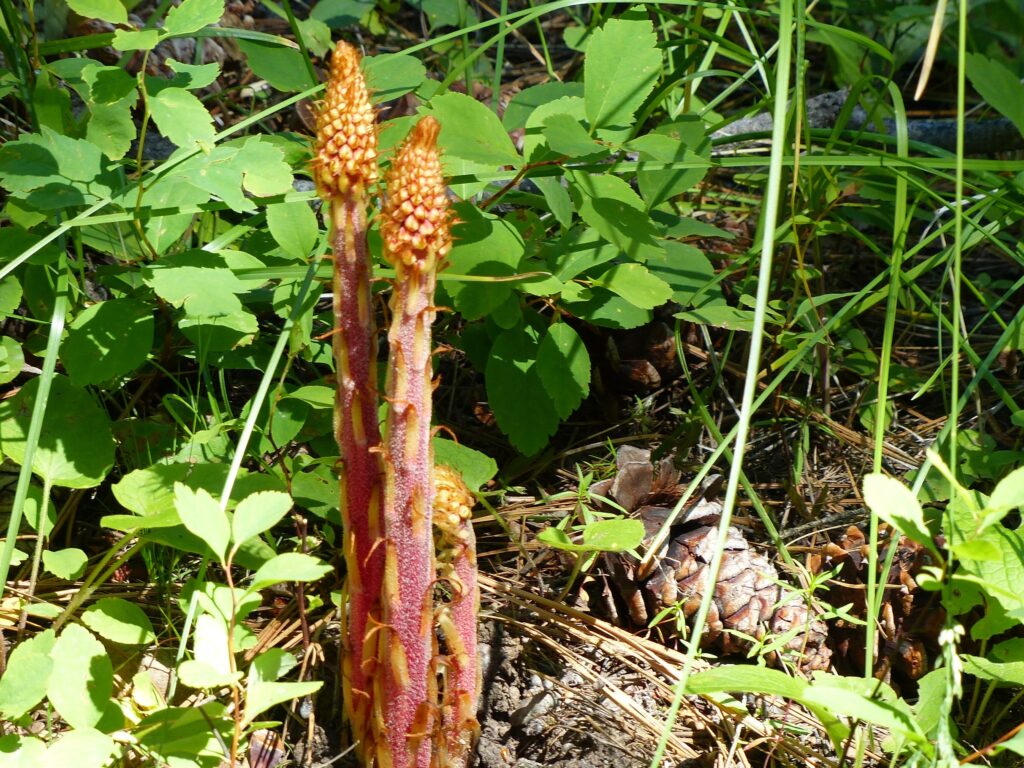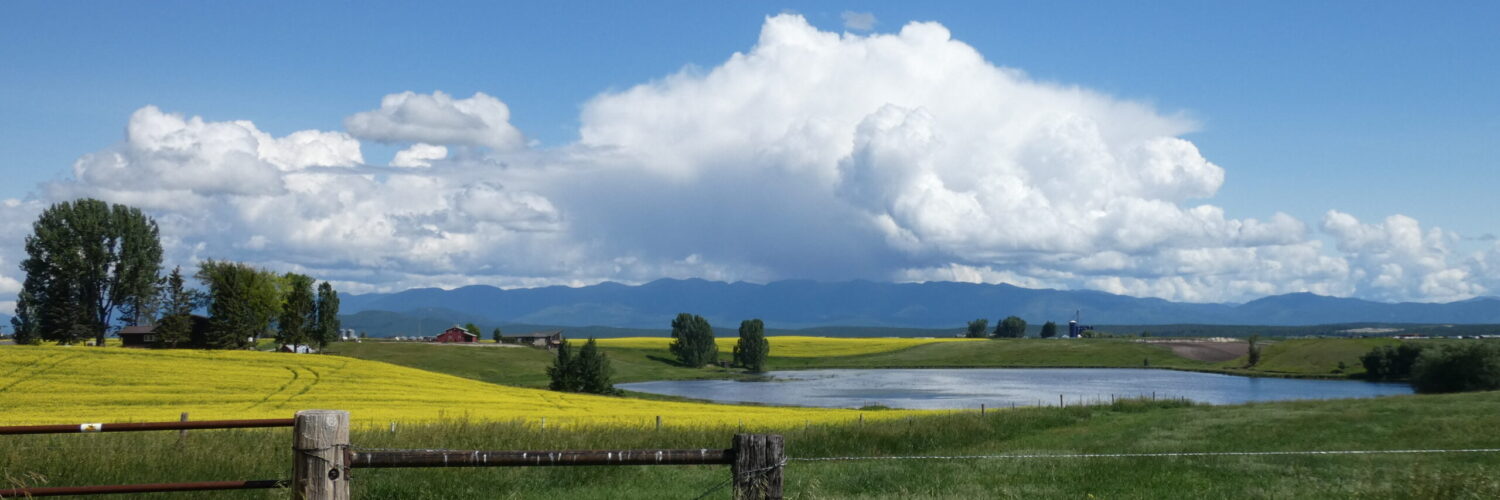by Pat Jaquith
pat@westvalleynaturalists.org

Pinedrops, perhaps named for the sticky texture of its stem, makes its first appearance in woods and clearings near pine trees after many of the spring ephemerals have gone to seed. Its three stages of growth are so different in appearance it would be easy to overlook the fact that they are all the same plant.

The thick stalk stretches upward rapidly for a plant that can’t manufacture its own food, often reaching more than three feet tall. Buds that clustered at the top of the emerging stem hang on curved pedicels along the elongated stem. The petals of the tiny urn-shaped flowers curl back at the rim making a foot-hold for bees as they insert their tongue deep into the bloom to retrieve nectar.
Because Pterospora andromedea produces very little chlorophyll, it is a root parasite dependent on a mycorrhizal fungus that is associated with a pine tree for its nutrients. This complicated dependency puts it at risk in some areas because of habitat destruction.

By early fall, the stem has become very woody and strong, and each of the little pedicels that held the flowers now support five-chambered seed pods that resemble tiny pumpkins. The seeds disperse through little slits between the chambers of the pod, leaving the empty pods to persist on the stem. We often see them standing tall and strong in deep snow and into the following spring.
I recently opened a seed pod to observe tiny dark seeds the size of a grain of pepper, each attached to a tiny wing of light material that catches the wind and provides transportation to its resting place. With luck, it will make connections with a suitable fungus/pine tree relationship that can provide energy for it to germinate.
Note: The photos above were taken in three different locations in the West Valley. Dates do not predict a timeline for the development of a single plant.

Very Nice! Thank You for sharing!